Analysis of suspension components / e-mobility
These pages will no longer be maintained from 1.11.24.
You can find the web presence of the Chair of Multibody Dynamics at www.dynamik.ovgu.de
Electric mobility offers, in addition to sustainability and the environmental friendliness, economic opportunities. However, these are accompanied by a large amount of technical issues and applied research. Obviously, this initially refers to issues relating to the management of the battery and the range, but not all problems are solved from a dynamic point of view as well.
A central point is the difference in mass distribution with respect to conventional drives, which results in a change in the dynamics of the vehicle. This results in a deviating driving behavior on the one hand, and comfort characteristics, which are significantly impaired on the other hand. Particularly in the context of wheel hub motors, the increased non-suspended mass must be taken into account conceptuallyand their potentially negative influence must be compensated by suitable measures. This is accompanied by deviating loads on the chassis, which were previously difficult to estimate. At this point different concepts will be investigated, which allow a determination of the real acting forces and moments while minimizing the necessary costs.
Multi-body simulation of vehicle dynamics through changes in mass distribution in e-mobility (batteries, drive concepts)
Due to the complex kinematic and dynamic interactions, multi-body approaches are favorably used for the simulative analysis of driving behavior. This makes it possible to estimate the influence of various constructive transformations on the overall dynamics at an early stage of development. As a result, necessary but costly and time consuming prototyping and experimental analysis can be reduced, which accelerates the overall development process.
The results provide guidance in the chassis dimensioning as the chassis load can be predicted by the use of near-wheel drives and the loads due to special events. Both aspects are crucial for the concrete design and must be considered in the design process. Contact
|
|
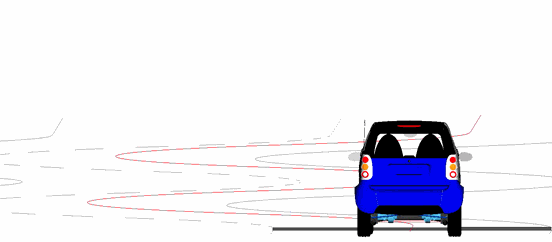 |
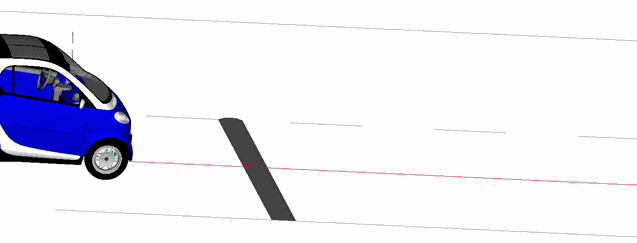 |
Experimental determination of wheel forces using a 6-component measuring wheel
In addition to the simulative analysis of vehicle dynamics, another focus is on the experimental determination of wheel loads. For this purpose, a measuring wheel of the company CAEMAX is used, which allows a quick and easy detection of the forces introduced into the chassis. On the one hand the load on different driving maneuvers and special events can be measured and thus important input quantities for the component dimensioning can be determined, on the other hand advanced numerical models can be validated and thus the level of detail of simulation analyzes can be increased. Contact
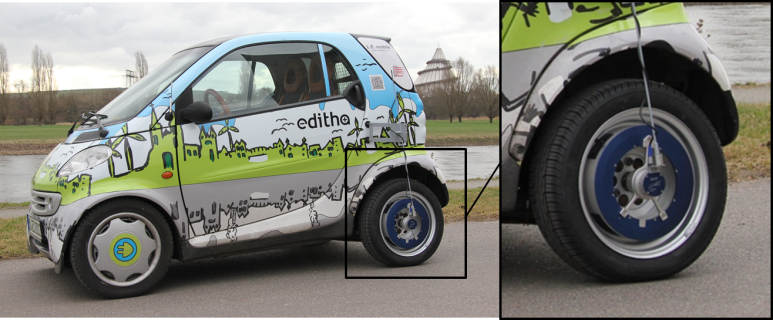 |
| Prototype "Editha I" with 6-component measuring wheel |
DMS measurements for the determination of chassis loads
Parallel to the experimental determination of the wheel loads using a measuring wheel, the application of strain gauges (SG) is investigated. The advantage of the SG measurement is the drastically reduced cost factor compared to the measuring wheel, which allows use outside of a prototypical application. For this purpose, a workflow is developed with which it is possible to optimize the SG positions and alignment model-based (FEM) taking into account the installation situation and possible load introduction points. The applicability of this method is validated both under laboratory conditions, on an axle test bench, and directly on the vehicle. Contact
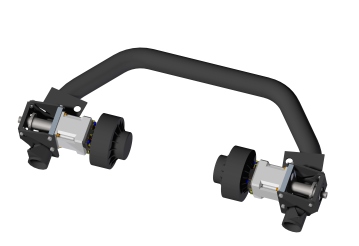 |
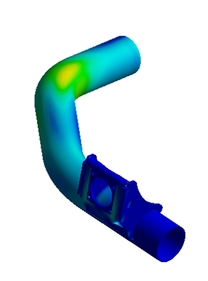 |
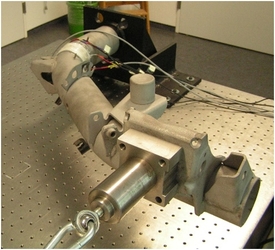 |
|
CAD model of the rear axle with wheel-motors |
Finite element model of rear axle | Test bench of the rear axle |
